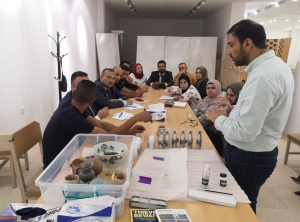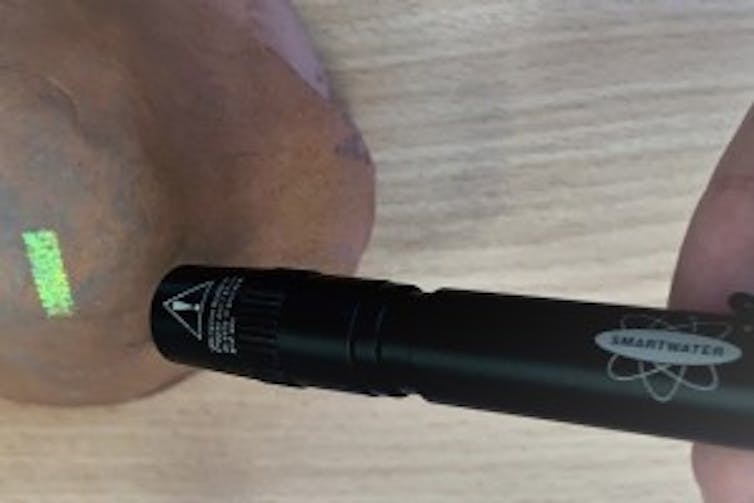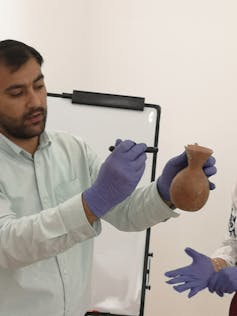In addition to causing mayhem and misery for most, the COVID-19 pandemic crisis has expanded opportunities for illicit looting, theft and dealing in one of the world’s most important resources – its cultural heritage. Here, Professor Roger Matthews explains how priceless artifacts can now be protected from this illicit trade.

Social instability and financial pressures can combine to encourage looting of archaeological sites across the world, particularly in the Middle East and North Africa, feeding the global online black market in antiquities dealing, which is estimated to have a daily turnover of US$10 million(£7.9 million).
There is significant evidence that terrorist groups such as Islamic State have benefited from the black market trade in looted antiquities from Iraq and Syria.
A country which has endured recurrent devastating episodes of looting of sites and museum collections is Iraq. In 1991, 2003 and 2014-17, situations of conflict and crisis have fostered widespread ransacking and theft of Iraq’s invaluable heritage assets. Most famously, in April 2003 in the wake of the US/UK-led invasion of Iraq, the Iraq Museum in Baghdad lost thousands of its most valuable pieces, many of which have never been recovered.
The cultural heritage of Iraq, where I have worked as an archaeologist for more than 35 years, is of national and global significance. Some of the world’s first farming villages, the world’s first cities and writing, and early empires were all developed by communities in the lands of Iraq, ancient Mesopotamia.
As president of RASHID International (Research, Assessment and Safeguarding of the Heritage of Iraq in Danger), I work closely with Iraqi and international colleagues to enhance the protection and promotion of Iraq’s heritage, situating it within a cultural rights framework that promotes equitable access to and enjoyment of heritage sites and assets by all the communities of Iraq.
Working with colleagues from the University of Reading and supported by a grant from the British Council’s Cultural Protection Fund, we recently completed an ambitious project to enhance the security and protection of more than 270,000 priceless artefacts in the collections of the Iraq Museum in Baghdad and Slemani Museum in Sulaimaniyah in the Kurdistan region of Iraq.
‘Liquid traceability’
To do this we used a commercial product, SmartWater, which works by providing “liquid traceability” to protected objects and materials. By applying a small dot or spray of the “smart” liquid to artefacts in museum collections, it becomes possible to prove the museum source of each object, should they ever be illicitly removed from their host museum. Each dot of liquid contains a unique code specific to that museum.

The liquid is invisible to the naked eye but glows brightly under directed UV light. Exhaustive tests have established its durability and lack of negative effect when applied to objects of inorganic materials, such as pottery, stone, glass and metal. Since the liquid was developed in the early 1990s, more than one million businesses, homes and heritage buildings around the world have adopted it.
The two major objectives of marking artefacts in this way are deterrence and traceability. After marking objects in the museum, clearly visible signage is displayed at the museums, as a means of deterring theft. Studies in the UK show that up to 74% of criminals refrain from committing crimes of theft where the company’s signs are displayed. The element of deterrence feeds through into the black market, introducing risk and reducing the appetite of potential buyers and channels such as auction houses.
But if protected objects are stolen, a study has shown that the encoded liquid traceability means that those objects are permanently traceable, and can be repatriated to their proper home once they are encountered in situations such as auction house sales and catalogues and in online forums.
Marking time
Supported by a grant of £156,000 from the Cultural Protection Fund, in 2019 I led a team of colleagues, including Dr Amy Richardson and Ali Al-Makhzoomi at the University of Reading, Phil Cleary at the SmartWater Foundation, and the directors and staff of the Iraq Museum and Slemani Museum in Iraq, in the application of SmartWater to artefacts in their collections.

Working to a tight schedule, the team succeeded in applying liquid solution to a total of 273,000 objects in both museums. Treated objects included pottery vessels, stone tools, metal coins and jewellery and glass ornaments, from across the span of Iraq’s rich heritage. These artefacts are all now permanently traceable as belonging to their respective museums.
Even more importantly, through the project we trained a total of 43 Iraqi museum professionals in the protocols of using the technology to protect their collections. These professionals are now in a position to pass on their skills and expertise to colleagues both within and beyond their own institutions.
Looking to the future, at the University of Reading we are working with SmartWater colleagues on the development of a liquid solution suitable for application to museum objects made of organic materials such as fabric, paper, leather and wood. We are also exploring expansion of the project to cover other museums in Iraq with vulnerable collections, and museum collections in other regions of the world. One such country is Yemen, where ongoing instability and conflict generate opportunities for illicit exploitation of one of the world’s great resources – its archaeological and historical heritage.
Roger Matthews is Professor of Near Eastern Archaeology. He receives funding from the Arts and Humanities Research Council, the British Council, and the European Research Council. The Iraq SmartWater project is funded by the British Council’s Cultural Protection Fund, in partnership with the Department for Digital, Culture, Media and Sport.
This article was first published in The Conversation on 18 June 2020.
